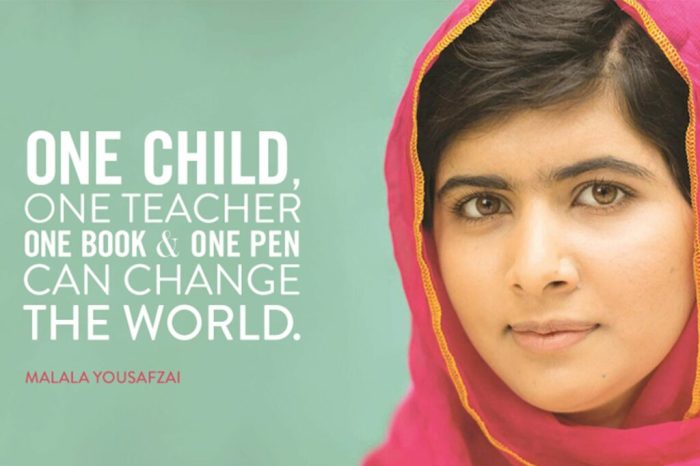I am malala summary of each chapter – Embark on a captivating journey through I Am Malala, the extraordinary memoir of Malala Yousafzai, a young woman who defied the Taliban and became a global advocate for girls’ education. This chapter-by-chapter summary provides a comprehensive overview of Malala’s inspiring story, from her early life in the Swat Valley to her present-day activism.
Throughout this summary, we will delve into the challenges Malala faced, the impact of her activism, and the profound lessons she has taught the world about the power of education and the importance of speaking out for what is right.
Chapter 1: I Am Malala: I Am Malala Summary Of Each Chapter

The title “I Am Malala” asserts Malala Yousafzai’s identity and unwavering resolve after the Taliban attempted to assassinate her. It is a powerful declaration of her resilience and determination to continue advocating for the education of girls.
On October 9, 2012, the Taliban boarded Malala’s school bus and shot her in the head. The attack was a direct response to her outspoken activism for girls’ education. Malala survived the assassination attempt but sustained severe injuries, including a fractured skull and damage to her facial nerves.
Impact of the Attack
- Malala’s physical recovery was long and arduous, requiring multiple surgeries and rehabilitation.
- The attack had a profound psychological impact on Malala and her family, causing anxiety, fear, and trauma.
- The international community condemned the attack, highlighting the importance of girls’ education and the dangers faced by activists.
- Malala’s story became a symbol of the struggle for education and women’s rights worldwide.
Chapter 3: The Schoolgirl
Malala’s passion for education was evident from a young age. She believed that every child, regardless of gender, deserved the opportunity to learn and grow.
She actively campaigned for girls’ education, speaking out against the Taliban’s ban on girls’ schools. She organized protests and petitions, and gave speeches at rallies and conferences.
Challenges and Obstacles
Malala’s pursuit of education was not without its challenges. The Taliban threatened her and her family, and she was eventually shot in the head by a Taliban gunman in 2012.
Despite these obstacles, Malala remained determined to continue her education. She recovered from her injuries and went on to attend Oxford University. She has since become a global advocate for girls’ education, speaking out at the United Nations and other international forums.
Chapter 4: The Attack
On October 9, 2012, Malala Yousafzai’s life took a dramatic turn when she was shot in the head by a Taliban gunman. The attack occurred as she was returning home from school on a bus with her classmates.
As the bus traveled through the Swat Valley, a gunman boarded and asked, “Who is Malala?” When Malala identified herself, he shot her in the head. The bullet pierced her skull, grazed her brain, and exited through her neck. Two other girls on the bus were also shot and injured.
Physical and Emotional Trauma, I am malala summary of each chapter
Malala sustained severe physical and emotional trauma as a result of the attack. The bullet caused significant damage to her skull and brain, resulting in a prolonged period of unconsciousness and rehabilitation. She underwent multiple surgeries to repair the damage and restore her cognitive functions.
Emotionally, Malala experienced intense fear, anger, and sadness. She struggled with nightmares and flashbacks of the attack, and she had difficulty concentrating and sleeping. The trauma of the shooting left a lasting impact on her mental health, requiring ongoing therapy and support.
International Response
The attack on Malala sparked international outrage and condemnation. Governments, organizations, and individuals around the world expressed their support for Malala and denounced the Taliban’s violence against girls’ education.
The attack also brought renewed attention to the issue of girls’ education in Pakistan and other parts of the world. It became a symbol of the ongoing struggle for gender equality and the right of all children to access education.
Impact on Malala’s Mission
The attack on Malala did not deter her from her mission to promote girls’ education. In fact, it only strengthened her resolve. After recovering from her injuries, Malala became a vocal advocate for the rights of girls and children around the world.
She established the Malala Fund, a non-profit organization that supports educational programs for girls in developing countries. She has also spoken out at the United Nations and other international forums, calling for increased investment in education and an end to violence against girls.
Malala’s story has inspired countless people around the world. She has become a symbol of courage, resilience, and the power of education to transform lives.
Chapter 5: The Hospital
Following the attack, Malala was rushed to a military hospital in Pakistan, where she underwent emergency surgery. She was later transferred to a hospital in the United Kingdom, where she received specialized care for her severe head and neck injuries.
Malala’s family and friends played a crucial role in her recovery. Her father, Ziauddin, was by her side throughout her hospitalization, providing unwavering support and encouragement. Her mother, Toor Pekai, and her two younger brothers also visited her regularly, offering love and comfort.
Support from Around the World
Malala’s story quickly gained international attention, and people from around the world rallied to support her. Thousands of messages, cards, and gifts were sent to the hospital, offering prayers and well wishes. The outpouring of support from strangers gave Malala hope and strength during her recovery.
Chapter 6: The New Life

After the attack, Malala’s life changed dramatically. She underwent multiple surgeries and spent months recovering in a hospital in Birmingham, England. During this time, she received support from around the world and became a global symbol of the fight for girls’ education.Once
she recovered, Malala dedicated her life to advocating for girls’ education and human rights. She spoke out at the United Nations, met with world leaders, and launched the Malala Fund, a non-profit organization that supports girls’ education in developing countries.
Challenges and Opportunities
As a global activist, Malala has faced both challenges and opportunities. She has been criticized by some for being too outspoken, and she has received threats from the Taliban. However, she has also been praised for her courage and determination, and she has inspired millions of people around the world.One
of the biggest challenges Malala has faced is the ongoing conflict in Pakistan. The Taliban continues to target girls’ schools and activists, and Malala has had to travel with security guards for her own safety. However, she has not been deterred, and she continues to speak out for the rights of girls.Despite
the challenges, Malala has also had many opportunities to make a difference in the world. She has met with world leaders, spoken at major events, and launched the Malala Fund. Through her work, she has helped to raise awareness of the importance of girls’ education and has inspired millions of people to take action.
Chapter 7: The Future

Malala envisions a future where every girl has the opportunity to learn and lead. She dreams of a world where education is accessible to all, regardless of gender, religion, or socioeconomic status. Malala believes that education is the key to unlocking the potential of girls and women, and she is determined to make it a reality for all.
Goals and Aspirations
Malala’s goals and aspirations are ambitious but achievable. She wants to see a world where all girls have access to quality education, and she is working tirelessly to make this happen. She has established the Malala Fund, a non-profit organization that supports education for girls around the world.
She also speaks out regularly about the importance of education, and she uses her platform to advocate for girls’ rights.
Impact of Activism
Malala’s activism and advocacy have had a significant impact on the world. She has raised awareness about the importance of education for girls, and she has inspired millions of people to take action. Her work has helped to change the way the world thinks about girls’ education, and it has helped to create a more just and equitable world for all.
FAQ Corner
What is the significance of the title “I Am Malala”?
The title “I Am Malala” reflects Malala’s determination to reclaim her identity after being targeted by the Taliban. It is a powerful statement of defiance and a reminder that she will not be silenced.
How did the Taliban’s rule impact Malala’s life?
The Taliban’s oppressive rule in Swat Valley had a profound impact on Malala’s life. She was forced to live in fear, and her education was severely restricted. Despite these challenges, Malala remained determined to learn and speak out for the rights of girls.
What was the international response to Malala’s shooting?
Malala’s shooting sparked international outrage and condemnation. World leaders and organizations expressed their support for Malala and called for an end to violence against girls’ education.